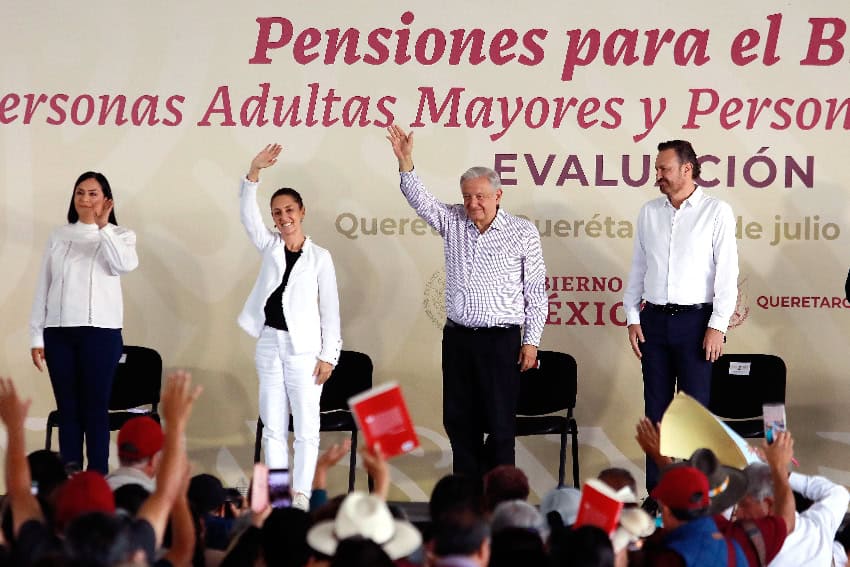Billionaire businessman Carlos Slim believes the Mexican government has its priorities wrong on welfare spending.
On Wednesday, he asserted that it is “totally irrational” for the government to be spending so much on pensions for seniors — more than 1.3 trillion pesos last year — when millions of people live in extreme poverty.

Speaking in Monterrey, Nuevo León, at the 19th World Summit of Nobel Laureates for Peace, Mexico’s richest person spoke about the need to not just “combat” poverty but “eliminate” it.
“There has to be a minimum level of well-being for the entire population. It’s incredible that in … Mexico we haven’t achieved it. … We’re giving too much income to retirees and we have six million people in extreme poverty. It’s totally irrational,” said Slim, the owner of companies such as Telcel, Telmex, Sanborns and Carso Infrastructure and Construction.
All Mexicans over the age of 65 qualify for the government’s universal senior’s pension program regardless of their wealth or how much they receive from other pension schemes.
That means that even 84-year-old Slim, who has a net worth of some US $89 billion, can collect a 6,000-peso (US $311) universal pension payment every two months. While he doesn’t need the money, many older Mexicans — especially those who worked in the vast informal sector and don’t receive any other retirement income from the government or private employers — certainly do.

Although the universal pension amount is quite modest, its payment could help to reduce poverty levels in Mexico. President Andrés Manuel López Obrador and other federal officials regularly highlight that the number of people living in poverty has declined during the term of the current government, in part due to welfare and social programs, as well as other factors such as increases to the minimum wage.
On Wednesday, Slim argued that Mexico has the potential to lift living standards considerably in coming years. With adequate investment in the country, Mexico’s per capita GDP — just under US $14,000 annually in 2023 — could double in the space of 12 years, he said.
“We have to take advantage of the opportunity with the United States now that it is on bad terms with China,” Slim said, referring to the U.S.-China trade war.
He predicted in 2022 that the Mexican economy would boom in the years ahead as the United States reduces its reliance on Chinese-made products.
“The products they imported from [China] will have to be produced here,” the magnate said.
“… What I see … is a prosperous Mexico with sustained growth, with a lot of opportunities for job creation and economic activities,” he said.
With reports from El Universal, El Economista and Forbes México
